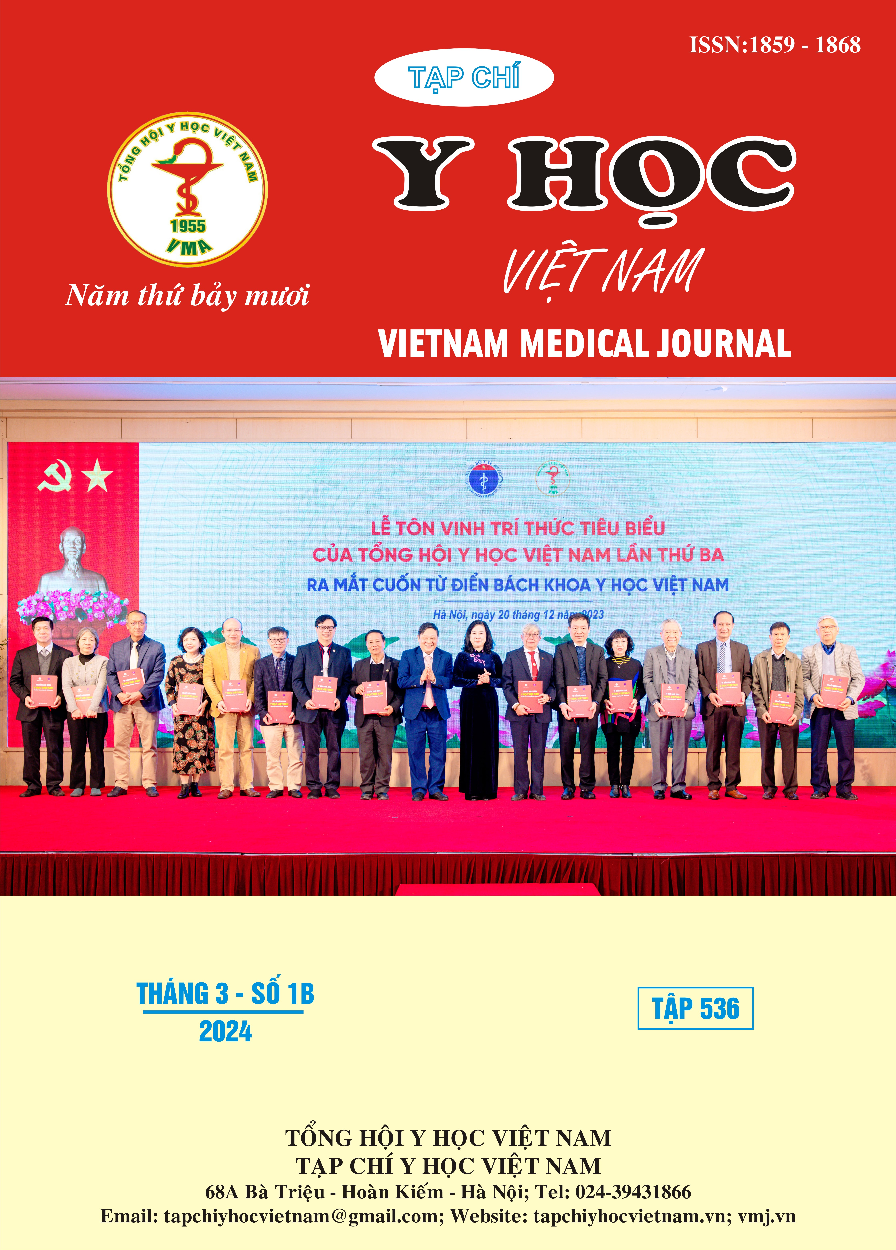STUDY ON SOME PATHOLOGICAL FEATURES AND MOLEVULAR SUBTYPES OF INVASIVE BREAST CARCINOMA AT THANH HOA ONCOLOGY HOSPITAL
Main Article Content
Abstract
Background: Breast cancer is the most common type of cancer in women, of which invasive breast carcinoma (IBC) is the type with the highest proportion. IBC is diverse in histopathological characteristics and molecular types, so there are different treatment methods and prognosis. In the world and at central hospitals in Vietnam, there are many studies on breast cancer, but in Thanh Hoa there are very few studies on this disease. Purpose: “Describe some pathological features and molecular subtypes of invasive breast carcinoma”. Methods: Research subjects and methods: Descriptive study on 164 IBC cases at Thanh Hoa Oncology Hospital from February 2022 to September 2023. Results: Invasive breast carcinoma of no special type (86.6%), histological grade II (73.2%) were the characteristics with the highest proportion. 53.7% of cases had axillary lymph node metastasis, 4.3% of cases had nerve invasion. The Her2 positive type accounts for the highest proportion (24.4%), the lowest are the luminal type A and triple negative. Conclusion: The histopathological characteristics and molecular subtypes of IBC at Thanh Hoa Oncology Hospital are very diverse, which is a premise for conducting more in-depth research on breast cancer.
Article Details
References
2. Cotran RS, Robbins SL. Robbins & Cotran Pathologic Basis of Disease. Tenth edition. (Kumar V, Abbas AK, Aster JC, eds.). Elsevier; 2021.
3. Chu Thị Trang. Áp dụng thang điểm IHC4 để phân tầng nguy cơ ung thư biểu mô tuyến vú giai đoạn I-II. Luận án Thạc sĩ y học. Trường Đại Học Y Hà Nội; 2020.
4. Vũ Thị Ngọc Hà. Nghiên cứu sự bộc lộ dấu ấn p53, Bcl2 và mô bệnh học trong ung thư biểu mô tuyến vú. Luận án Thạc sĩ y học. Trường Đại Học Y Hà Nội; 2019.
5. Kondov B, Milenkovikj Z, Kondov G, et al. Presentation of the Molecular Subtypes of Breast Cancer Detected By Immunohistochemistry in Surgically Treated Patients. Open Access Maced J Med Sci. 2018;6(6): 961-967. doi:10.3889/ oamjms.2018.231
6. Lê Thị Uyên. Tình trạng nảy chồi u trong ung thư biểu mô tuyến vú thể ống xâm nhập. Luận án Thạc sĩ y học. Đại học Y Hà Nội; 2021.
7. De Santis MC, La Rocca E, Meneghini E, et al. Axillary nodal involvement by primary tumor features in early breast cancer: an analysis of 2600 patients. Clin Transl Oncol Off Publ Fed Span Oncol Soc Natl Cancer Inst Mex. 2020; 22(5): 786-792. doi: 10.1007/s12094-019-02188-7
8. Lakhanpal R, Sestak I, Shadbolt B, et al. IHC4 score plus clinical treatment score predicts locoregional recurrence in early breast cancer. Breast Edinb Scotl. 2016;29: 147-152. doi: 10.1016/ j.breast.2016.06.019
9. Tạ Văn Tờ. Nghiên cứu hình thái học, hóa mô miễn dịch và giá trị tiên lượng của chúng trong ung thư biểu mô tuyến vú. 2004.
10. Pundavela J, Roselli S, Faulkner S, et al. Nerve fibers infiltrate the tumor microenvironment and are associated with nerve growth factor production and lymph node invasion in breast cancer. Mol Oncol. 2015;9(8):1626-1635. doi:10.1016/j.molonc.2015.05.001


